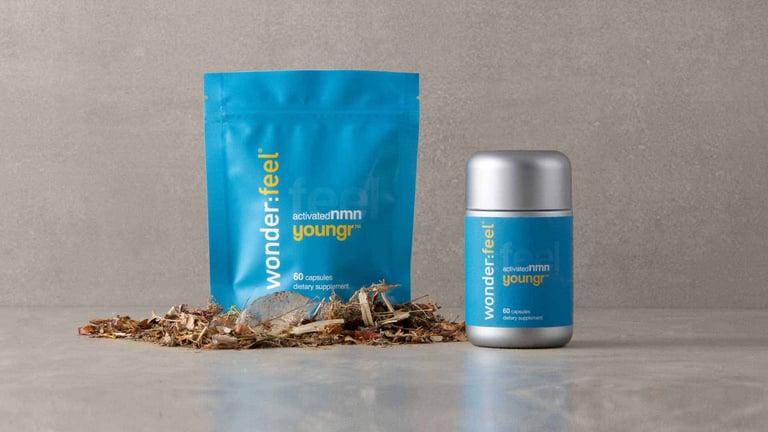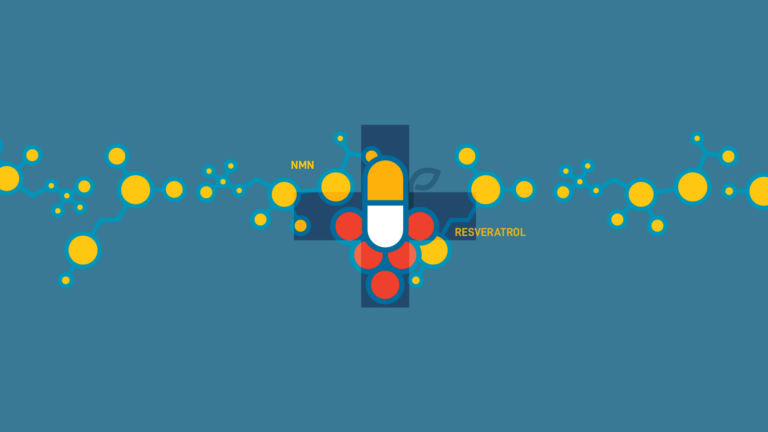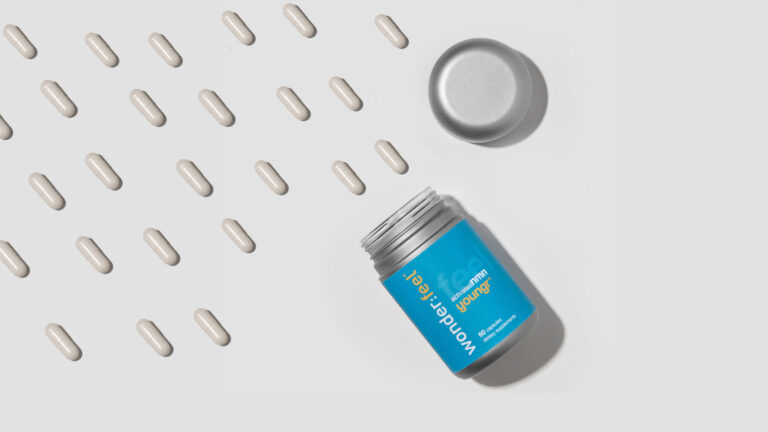Key Takeaways
- Creatine helps build stronger muscles and bones, but its benefits don’t end there. It supports brain health, sleep, energy production and healthy aging, making it appealing to just about everyone.
- Your body actually makes about 1 gram of creatine per day, but optimal function calls for 3 to 5 grams—and sourcing it from food is impractical for most people.
- Animal-based proteins, like red meat and fish, have small quantities of creatine, but you’d have to commit to a carnivore-heavy diet to reach the daily recommended creatine dose.
Creatine has been a staple for bodybuilders and athletes since the early 1990s, but in recent years, its use has expanded pretty significantly across other demographics. As expected, fitness enthusiasts have jumped on board, but so have older adults, women, vegans, and vegetarians—and not because they want big gains in the gym. Growing scientific evidence has made it clear that creatine has a wider range of benefits that makes it really appealing across aging, cognition and general wellness markets. It raises an important question: Can I get enough creatine from my diet? For most people, the answer is probably not. Luckily, there’s an easy (and inexpensive) workaround.
What is creatine, and why do I need it?
Creatine is a naturally occurring compound made from three amino acids (arginine, glycine, and methionine) and it’s actually produced in the liver, kidneys, and pancreas. Most of the creatine we make is stored in our muscles as phosphocreatine, which is used to generate ATP (adenosine triphosphate).
Think back to biology 101, and you may recall that ATP is what literally powers your body, all the way down to the cells. On a cellular level, ATP is critical for making proteins, removing waste, shuttling nutrients and ions across cell membranes, and sending nerve signals. Zoom out a little, and we see ATP being used to keep your heart beating, your muscles contracting (essential for breathing—no small thing!), and your brain activity humming. We tend to think of APT in relation to strenuous physical demands, like sprinting or lifting weights, but you need it to blink, to think, to sleep, to digest. Basically, all day, every day, your body is producing its own body weight in ATP just to keep things running (and you need NAD, or nicotinamide adenine dinucleotide, for ATP production, just FYI). Exercise simply increases your need for ATP. And that’s where the value of creatine becomes pretty darn obvious.

ATP may be the body’s primary energy source, but it doesn’t store it in large amounts. When you burn through it, which can happen in just seconds, it becomes ADP (adenine diphosphate) and needs to be recharged back into ATP. To do that, your body taps into its phosphocreatine stores, primarily located in muscle and brain cells. It nicks a phosphate group to convert ADP back into ATP, right when you need it most. That’s why having a lot of free creatine and phosphocreatine in the body is so valuable.
It’s not just about HIIT workouts, or creatine’s ability to help manage the body’s inflammatory response (which can help hasten recovery after working out). Creatine also supports brain and mental health, and some evidence suggests that it may have a positive impact on sleep quality too. And because creatine helps maintain muscle health as we age, it directly contributes to stronger, denser bones. That’s why it’s no longer limited to just bodybuilders and athletes.
As a sidebar, we’re seeing that creatine is especially beneficial for women, who tend to naturally make and store less creatine than men. Women navigating the hormonal rollercoaster of menopause in particular benefit from the cognitive and sleep support creatine offers.
Food-derived creatine: Where to get it
Creatine is found in pretty small quantities in animal-based foods. Here’s a list based on a serving size of 100 grams or 3.5 ounces:
- Herring: 1 to 1.1 grams
- Beef (steak): about 1 gram
- Pork: about 1 gram
- Salmon: about 1 gram
- Tuna: 0.8 to 1 gram
- Cod: 0.7 to 0.9 gram
- Chicken breast: 0.4 to 0.6 gram
- Turkey: 0.4 to 0.6 gram
Those quantities refer to raw meat, which brings us to an important caveat: Cooking reduces creatine content by anywhere from 10-30%. Boiling tends to be a better choice for maintaining creatine than grilling or frying because it uses lower temperatures and more moisture, but… boiled cod? The cut also matters. Steaks, filets, and chops, which are cuts of muscle tissue, have more creatine than things like short ribs, brisket, shank, high-fat ground meats, and organ meats.
So, can you get all of the creatine you need for all of these important jobs just from what you eat and produce naturally? Probably not, unless you’re in the habit of downing pounds of lean beef and salmon every single day. At best, human bodies produce about one gram of creatine in a day, and you need more than that if you want your cells to function well. The typical daily recommendation for both men and women is 3 to 5 grams.

Now, let’s answer question number one. Trying to source creatine solely from what you eat probably won’t be enough to meet that daily recommendation. The average omnivorous diet nets about 1 to 2 grams of creatine a day. To bump that up to 3 to 5 grams, you’d have to eat over 2 pounds of chicken or between 1 and 1.5 pounds of beef, pork, or salmon. Let’s put that into perspective: You’re looking at four chicken breasts, three to four burger patties, and two eight-ounce servings of salmon in a single day. The average bodybuilder might consider that a reasonable amount of protein, but for many people, it’s neither realistic nor sustainable (nor particularly appetizing). Plus, there are other issues. What if you limit red meat? What if you’re following heart-healthy guidelines? What if you’re a vegetarian or vegan? That brings us to another point worth clarifying.
Is there any creatine in plant-based foods?
We’ve covered that creatine comes from animals, but does that mean it’s not found in any amount in plant-based foods? Well, yes. Creatine is only found in animal tissues, and plants don’t have those. Unlike animals, plants use photosynthesis for cellular energy, so they don’t need creatine at all.
In fact, if you don’t eat any or only a little animal-based foods, there’s a good chance you have lower baseline creatine stores. It’s a scenario that could potentially affect your muscle performance and cognitive energy, especially compared to the average omnivore. Vegetarians and vegans, take note!
Supplementing creatine: Does it work?
Most people, and especially those who avoid animal-based foods, are going to have a hard time getting enough creatine from diet alone. But that’s where the magic of supplementation comes in. In very happy news, creatine monohydrate (the most common form) is exceptionally easy to supplement and by all accounts, it works extraordinarily well. Reassuringly, creatine has been clinically studied for decades (the first was reported in 1965!), making it one of the most rigorously researched supplements on the market. Currently, there are some 1,180 published human studies evaluating creatine as a supplement in the Medline database. Research consistently shows it to be safe and well-tolerated, even with long-term use.
As supplements go, creatine is straightforward. It’s most common in powder form, which can be mixed into smoothies or water. Creatine gummies are popular as well—though often loaded with unhealthy ingredients—and then there are the more sophisticated creatine bites, which often include elevated ingredients like cacao. The trick is zeroing in on a creatine supplement you enjoy, because consistency is the goal.

The bottom line
The research has made it pretty plain—creatine plays an essential role in overall wellness, which means this stuff isn’t just for bodybuilders anymore. But don’t assume that your natural production and a meat lover’s diet means you’re getting all the creatine you need. The simple truth is that most people just don’t get enough through diet alone, even if you’re a proud carnivore and especially if you avoid animal products. The good news? Supplementing with creatine is easy, safe, and effective. Heck, with elevated creatine bites, it can actually be downright delicious!
Frequently Asked Questions
Which foods contain the highest levels of creatine?
Animal-based proteins, like lean cuts of red meat and fish, tend to have the most creatine. A 3.5-ounce serving of lean beef has roughly 1 gram of creatine, while poultry options like chicken and turkey have about half that. Ideally, you should aim for 3 to 5 grams of creatine every day. If you’re trying to source it entirely from food, plan on a very meat-forward diet.
Does cooking reduce the creatine content in meat?
Prolonged cooking times and high heat do indeed reduce creatine content in meat—some estimates put it anywhere from 10-30%. That means grilling, frying and roasting are less ideal than boiling or stewing, which use lower temperatures and maintain more moisture.
Do I still need creatine supplements if I eat a lot of meat?
It’s a bit of a guessing game, because different cuts of meat have different creatine levels and cooking reduces creatine content (and nutritional labels don’t have a handy callout of creatine, either). But if you’re consistently eating at least two pounds of high-quality lean meats every day, you’re probably hitting your creatine targets. On the other hand, a creatine supplement is a simple way to ensure optimal levels.
Is it healthier to get creatine from food rather than pills?
It’s always best to get your nutrition from food rather than pills, and creatine is no different. Sourcing creatine from food means you get other nutrients, like protein and iron. The challenge is reaching the target goal of 3 to 5 grams of creatine from diet alone. That’s where well-chosen creatine supplements can be really helpful.













